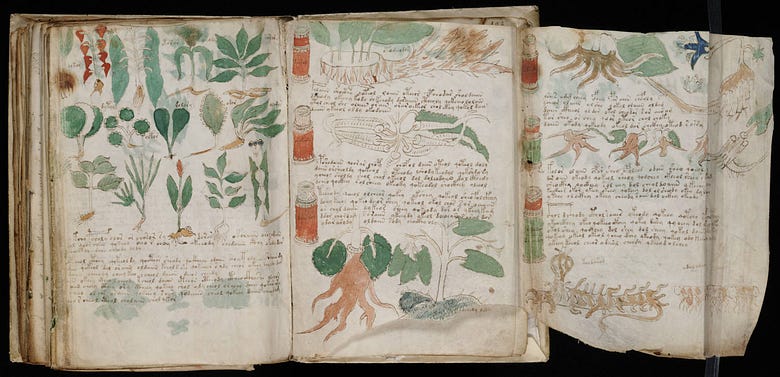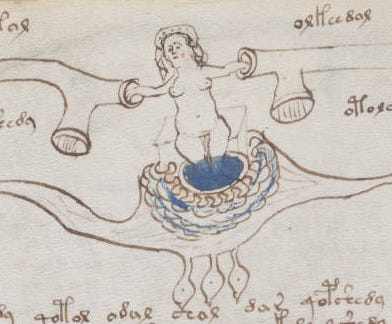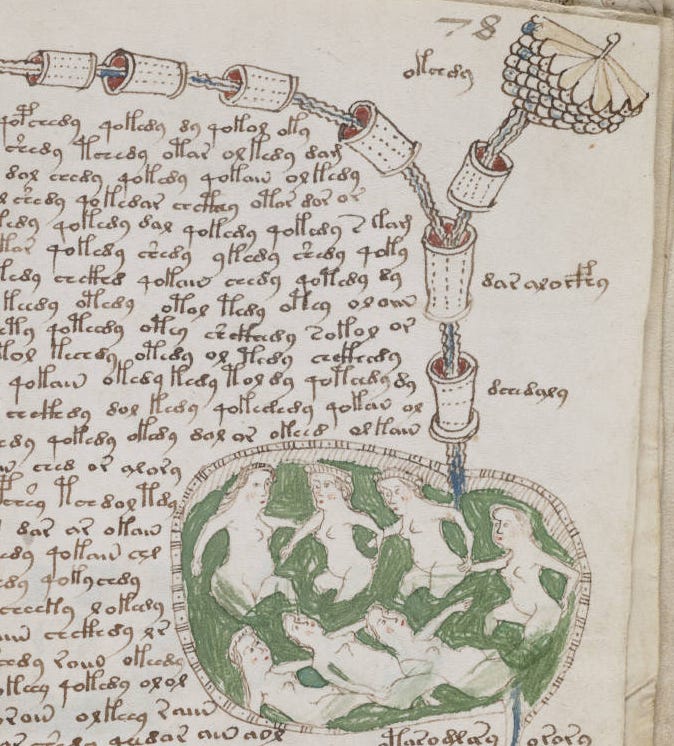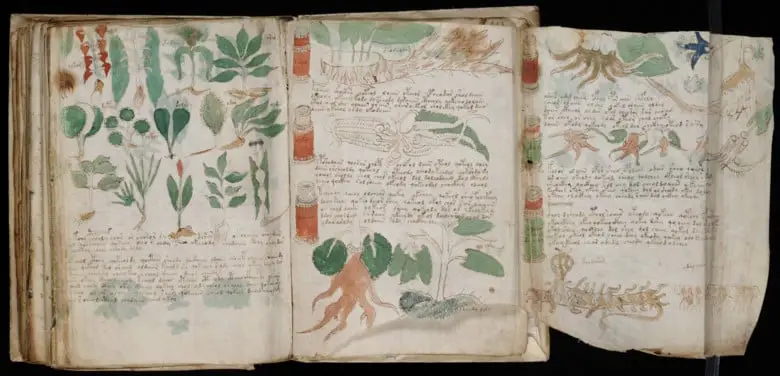
“It is only through mystery and madness that the soul is revealed.”― Thomas Moore
Who doesn’t like a good mystery? Georg Baresch sure did. Way back in 1637, he wrote to a famous polymath about a mysterious book he had in his vast collection.
In the letter, he mentioned a mysterious “sphynx” that was taking up space in his library. An old book with detailed drawings and sloppy paint depicting plants, animals, and star structures, many of which don’t exist.
On top of that, the entire tome of 170,000 characters and 240 pages was written in a language that no one in recorded history has any knowledge of whatsoever.
Fast forward 400 years later, and scientists have finally figured out what that language actually was — about 50 plus times, that is.
Because every one of the studies, guesses, and estimations on just what the hell the Voynich Manuscript actually is have been torn apart by other researchers, time and time again!
What is the Voynich Manuscript?
Firstly, the Voynich Manuscript is named after Wilfrid Voynich, a rare book collector who first acquired it in 1912. And that’s about as far as our factual history goes.
The thing is, as much as scientists have tried to decipher the language used, the images inside, and the entire purpose of the book, no one can come to an agreed consensus on what the hell this book actually is.
First, in 2009, the University of Arizona carbon dated the manuscript to between 1404 and 1438. Secondly, the first record of the tome is from the letters Georg Baresch wrote some 200 years later.
The language used is also completely unique.

- Some have suggested it’s a form of Greek or Latin short-hand, only to be disproved.
- Others have proffered it’s a form of Mandarin Pinyin or other South-East Asian languages, only to be disproved.
- Others have said the language is just gibberish and completely made-up, only to be disproved.
- Others have made proffered the text is actually hidden by using a cypher, as the original owners were under the watchful eye of the church, only to be disproved.
There are dozens and dozens of other theories, some even using advanced computerized statistical analysis, and all seem to fall short.
And then there are the drawings


Then there are the drawings of the sun, moons, and stars. Most drawings are often accompanied by pictures of nude women, almost as if the artist viewed them as a necessary component. The book even shows the symbols for the 12 zodiac constellations — complete with 30 female figures painted around each one.

Afterward, there are pages and pages of drawings showing elaborate causeways, pipelines, islands, a few castles, and even a multi-page fold-out of a large volcano.

All with accompanying undecipherable text and, of course, paintings of nude women.
It’s the common theme of the female body and the many plant descriptions that gives an impression to many researchers the manuscript was a type of medicinal book for affluent women.
But then again, most of the plants don’t seem to even exist in the first place, with many pictures showing Lovecraftian hybrid plants consisting of roots, leaves, and flowers — all from different species.
In short, it’s a magical tome full of magical species written in a magical language — and we have no damn idea what it was meant for.
Takeaway
While we may never know the actual purpose of this mysterious language and manuscript, it certainly won’t stop researchers all over the world from trying to find out the answer to this.
And maybe that’s the only certainty that can come out of this book.
That people’s egos will continue to drive them to discover the secrets of the manuscript. That every scientist and programmer and statistician who sits down and spends years of their life trying to unlock the code of a magical book of gibberish are spending their valuable time not so much to further humanity, or history, or knowledge, but to come out on top as being THE scientist to crack the case.
And if that’s what’s truly driving them, then maybe whoever created this book in the first place is still laughing in whatever grave they wound up in.
Because that’s my guess — that this entire thing was an elaborate joke created as a hobby by a very intelligent individual with enough funding to spend craploads of time crafting such a work.
And until proven otherwise, I’ll continue thinking that’s true.
Because it makes me laugh. And laughter is more important than a made-up language about made-up plants and made-up accolades of who can be the smartest scientist on the planet to crack such a made-up mystery.
If you’re curious to see the Voynich Manuscript in its entirety, Yale University — which holds possession of the book since 1969 — has digitized it for all to see.
Happy deciphering!
Head over here for more of my written shenanigans.





